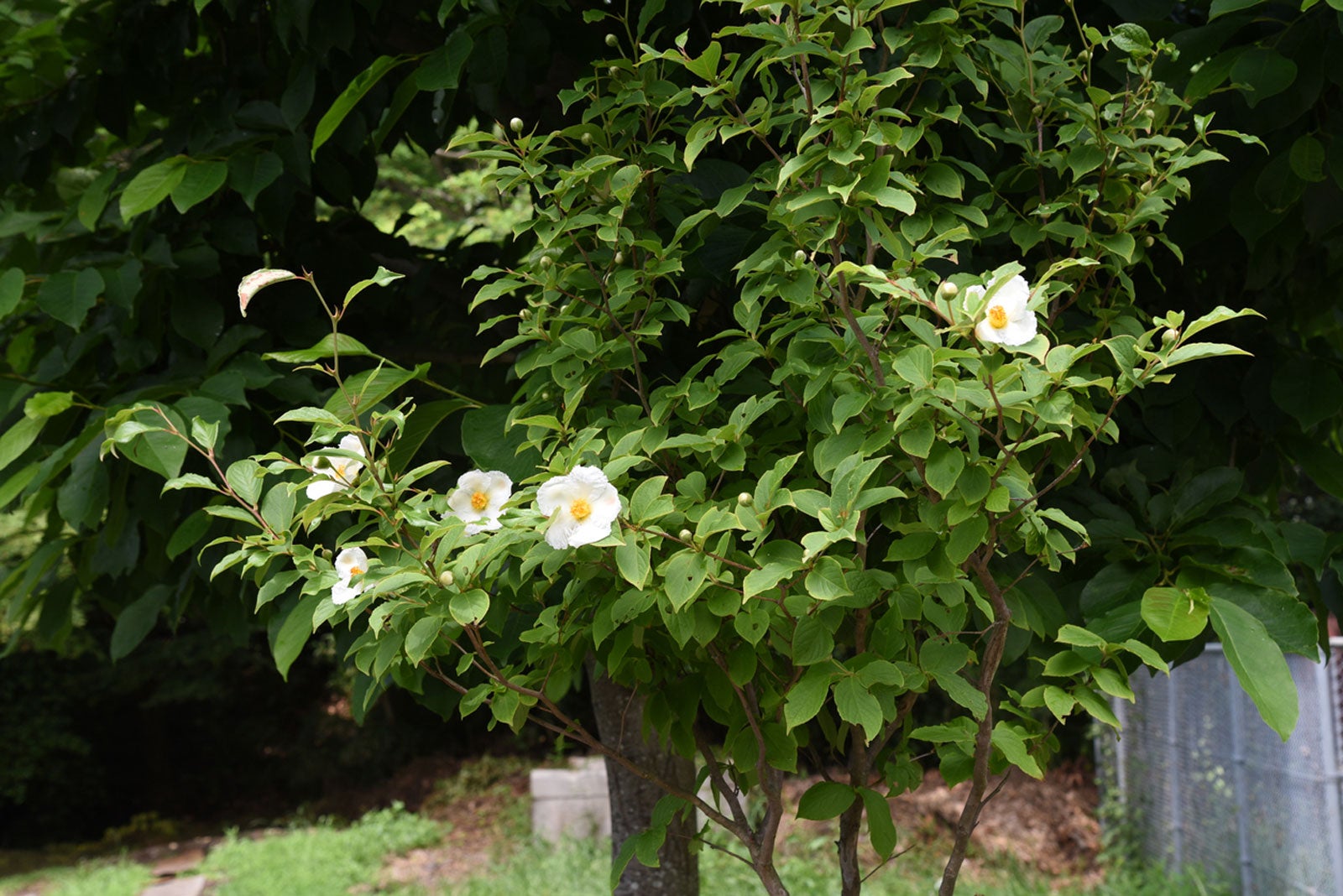Japanese Stewartia Info: How To Plant A Japanese Stewartia Tree


If you can only bring one tree into your garden, it will have to provide beauty and interest for all four seasons. The Japanese stewartia tree is up for the job. This medium-sized, deciduous tree decorates a yard at every time of the year, from the showy, summer flowers to unforgettable autumn color to gorgeous, peeling bark in winter.
For more Japanese stewartia info and tips on Japanese stewartia care, read on.
What is a Japanese Stewartia?
Native to Japan, the Japanese stewartia tree (Stewartia pseudocamellia) is a popular ornamental tree in this country. It thrives in U.S. Department of Agriculture plant hardiness zones 5 through 8.
This lovely tree has a dense crown of oval leaves. It grows to about 40 feet (12 m.) tall, shooting up at the rate of 24 inches (61 cm.) a year.
Japanese Stewartia Information
It’s hard to know where to begin to describe the ornamental aspects of this tree. The dense canopy and its conical or pyramid shape are pleasing. And branching begins close to the ground like crape myrtle, making this an excellent patio or entryway tree.
Stewartias are beloved for their summer blossoms that resemble camellias. The buds appear in spring and flowers keep coming for two months. Each one alone is short-lived, but they replace each other rapidly. As autumn approaches, the green leaves blaze in reds, yellows, and purples before falling, to reveal the spectacular peeling bark.
Japanese Stewartia Care
Grow a Japanese stewartia tree in acidic soil, with a pH of 4.5 to 6.5. Work in organic compost before planting so that the soil retains moisture. While this is optimal, these trees also grow in clay soil of poor quality.
Sign up for the Gardening Know How newsletter today and receive a free copy of our e-book "How to Grow Delicious Tomatoes".
In warm climates, Japanese stewartia trees do better with some afternoon shade, but it likes full sun in cooler regions. Japanese stewartia care should include regular irrigation to keep the tree as healthy and happy as possible, but these trees are drought tolerant and will survive for some time without much water.
Japanese stewartia trees can live for a long time with proper care, up to 150 years. They are generally healthy with no particular susceptibility to disease or pests.

Teo Spengler is a master gardener and a docent at the San Francisco Botanical Garden, where she hosts public tours. She has studied horticulture and written about nature, trees, plants, and gardening for more than two decades, following a career as an attorney and legal writer. Her extended family includes some 30 houseplants and hundreds of outdoor plants, including 250 trees, which are her main passion. Spengler currently splits her life between San Francisco and the French Basque Country, though she was raised in Alaska, giving her experience of gardening in a range of climates.